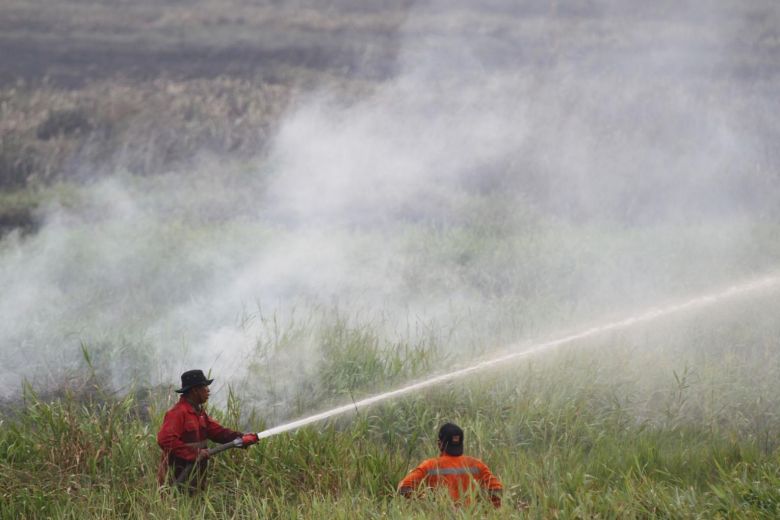Asean must raise green investment by 400% to guard against environmental risks: DBS, UN study
SINGAPORE – THE Association of Southeast Asian Nations (Asean) region needs to increase green investment by 400 per cent each year to protect its people and economies from climate change and other environmental shocks, according to new research released on Wednesday (Nov 15).
The study, Green Finance Needs in Asean, undertaken by DBS and the UN Environment Inquiry into the Design of a Sustainable Financial System, finds that US$3 trillion in green investment is needed between 2016 and 2030. This represents a new ASean green investment market 37 times the size of the global 2016 green bond market.
“Asean is undergoing transformational changes as it adapts to climate change and pivots towards a more sustainable path of development,” said DBC CEO Piyush Gupta. “At DBS, we believe there is no trade-off between promoting sustainable development and value creation for our shareholders – green finance can be good business too.”
The risks come from high-carbon, resource-intensive growth that have damaged both people and planet. Pollution, natural resource depletion and climate change bring significant economic stresses that policymakers historically have not accounted for, or properly addressed, in development plans, said the study.
Asian Development Bank (ADB) research shows that Asean members are more exposed to such risks than the global average – down to significant poverty rates, economic dependence on environmentally sensitive industries, geographic vulnerability to climate effects, and rapid population growth.
To reduce its vulnerability, and provide long-term economic stability and prosperity, the Asean region needs put itself on a sustainable trajectory, said the authors of the report. This will require substantial amounts of green investment.
“This report lays out ways in which the Asean region can unlock this investment and protect its people, environment and economies,” said Dr Ma Jun, UN Environment’s Special Advisor on Sustainable Finance and Co-chair of G20 Green Finance Study Group.
Current annual Asean flows of green finance are estimated at US$40 billion, against an average annual need of roughly US$200 billion to 2030 – which adds up to the estimated total of US$3 trillion.
This investment is spread across infrastructure (US$1.800 trillion), renewable energy (US$400 billion), energy efficiency (US$400 billion) and food, agriculture and land use (US$400 billion).
Indonesia will require the largest volume of green finance. Substantial investment opportunities also exist in Thailand and Vietnam.
Approximately 75 per cent of current flows comes from public finance and 25 per cent from private finance, largely in the form of commercial loans. Future public contributions are anticipated to drop to around 40 per cent. This means that private green finance flows will need to scale up by a factor of over ten to meet the demand.
The report identifies several barriers to this.
Fo one, many of the SMEs that dominate Asean economies have issues accessing finance, which could be used for green investment in improving environmental performance, expanding sales of green goods and services, and reshaping the practices of agricultural smallholders.
There is also insufficient environmental disclosure from companies, and limited information-sharing platforms. This makes it more difficult for financial decision makers to identify, price and manage environmental risk.
The pipeline of commercially viable green investment opportunities is also relatively limited.
Another big barrier to green investment is the exchange rate volatility across the ten Asean member currencies.
The report said no single solution set will deliver the green finance required in Asean but it offers several areas that would benefit from further exploration.
Investors with medium- to long-term liability profiles, such as insurance companies or pension funds, could help scale up green investment by lending directly to green projects with longer-term investment needs and purchasing green assets channelled by banks into the capital markets.
Initiatives could be undertaken to develop voluntary environment-related financial risk disclosures for use by companies in providing relevant information to investors, lenders, insurers and other stakeholders.
A deeper green investment asset pipeline could be developed, through aggregation of assets into financial products, use of public funds, and new financial products such as forms of environmental insurance.
Digital finance also offers promising avenues to connect SME users of green finance to lower cost sources through a growing range of intermediaries, such as mobile or crowdfunding platforms, said the report.
Finally, green finance roadmaps could enhance the ability of the financial system to mobilize green finance. These long-term, systemic plans involve identifying system-wide needs, barriers to scaling and priority actions, said the study.
Source: http://www.straitstimes.com/business/economy/asean-must-raise-green-investment-by-400-to-guard-against-environmental-risks-dbs


 Thailand
Thailand




